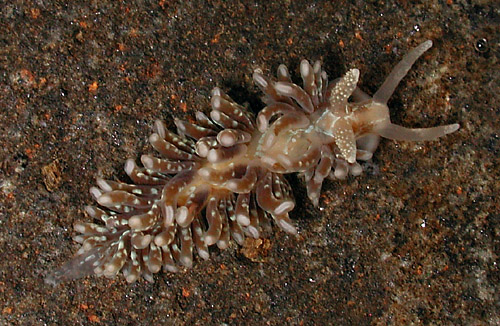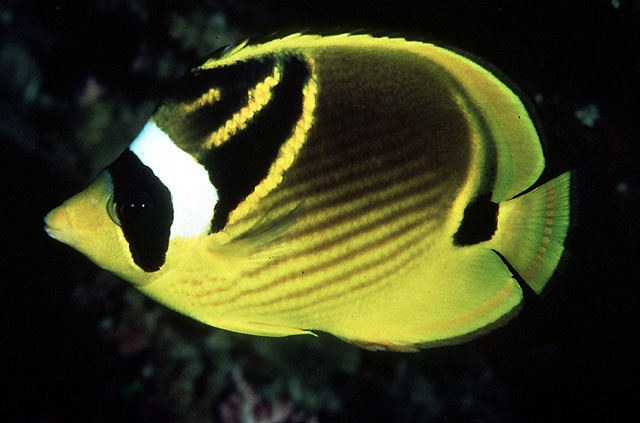 |
| Baeolidia salaamica photo C. Pittman |
In most aquariums when the glass sea anemone (Aptasia pulchera) appears, it is a major nuisance - growing fast, taking over turf and stinging everything that gets in its way.
 |
| Racoon butterflyfish, Photo J. Randall |
However, if you are lacking such a fish, a sea anemone eating sea slug might be nice. They are even sold for this purpose by on-line aquarium supply shops. Too bad there are problems with this approach, such as the fact that the sea slugs starve to death after they have eaten all of the sea anemones. So some thought should go into this process if you are having issues with sea anemone overgrowth.
In our case, it was just after I had found the coral eating sea slug Phestilla in the touch tank eating the corals, that I found a similar looking sea slug amongst the sea anemones. My first impulse was that it was a Phestilla, but after a closer look, I realized that it was different.
 |
| S. Lofy image |
So, what was the sea slug I found? Images from Sloane Lofy, an intern in the Aeby lab show a Baeolidia sea slug, most likely Baeolidia salaamica (Spurilla salaamica).
 |
| Berghia on the glass sea anemone (Aptasia). S. Lofy picture |
When Baeolidia sea slugs eat a sea anemone, not only do they not get stung, but some are able to pass the stinging cells through their gut to the tips of the their own skin (cnidosacs on their cerata - the furry looking parts). This gives them the protection of their prey. Imagine eating a cactus, having the spines migrate out to your skin and then stick out to protect you; or eating a Portuguese man-of-war and then being able to sting anyone who touched you, how cool would that be.
It gets better still, since the glass anemone not only stings, but also has zooxanthellae, single cell algae that make extra food for the anemone, some aeolid sea slugs not only eat the stinging cells and keep them, they may also keep the zooxanthellae for an extra energy boost! This is a very unique group of animals.
Baeolidia salaamica can eat the stinging cells of their prey and keep them for their use, it is not as clear if they can use the zooxanthellae (from my short bit of reading on this particular species), Regardless, after checking out our sea slug, we returned it to the tank, a welcome addition to the community!
Aloha,
Mark
For references, check the links! Some cool sites there. And J. P Hoover of course from his Hawaii Sea Creatures . Thanks.


So this slug is coral & reef safe?
ReplyDeleteBasically, but I would keep my eye on any introduction to a reef tank. You might end up with a the first that gives corals a try when other food runs out.
Delete